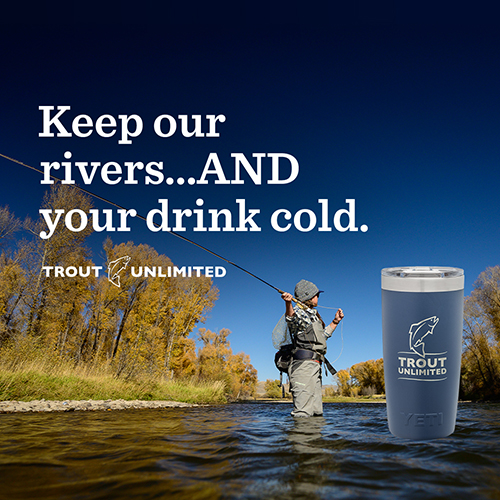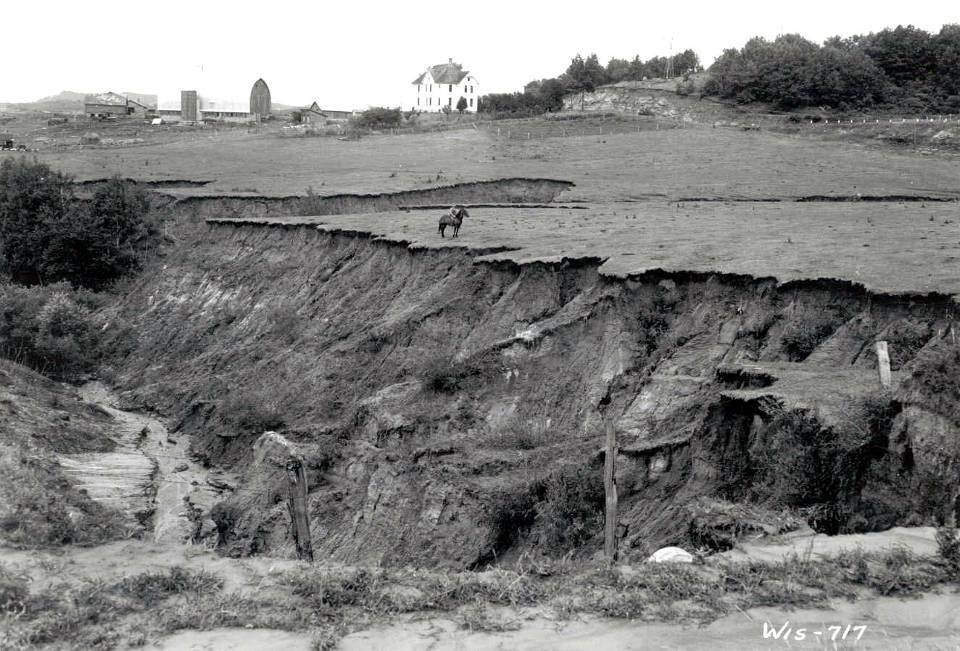
This Special Publication of the 11th Annual Driftless Area Symposium is a review of the science conducted in the Driftless Area that is relevant to stream restoration (including habitat improvement), with each section written by scientists or restoration practitioners who have worked in the region. The review is driven by an interest in understanding the current state of the science in the Driftless Area to continue to inform strategic conservation investments, which is essential given the increased frequency of floods over the past decade and the fact that climate projections predict an increased frequency of high-intensity rainfalls into the future. The intense rains and subsequent flooding in late-August and early-September of 2018 highlight the issue, thus begging the question: What can we glean from past science to plan for flood resiliency in an uncertain future?
Resources
Driftless Area Restoration Effort project page on TU.org.
Driftless Area Restoration Effort webpage
This Special Publication of the 11th Annual Driftless Area Symposium is a review of the science conducted in the Driftless Area that is relevant to stream restoration (including habitat improvement), with each section written by scientists or restoration practitioners who have worked in the region.

1. The Driftless Area is a unique geographic region of the upper Midwest.
2. The geologic and geomorphic processes responsible for the creation of the Driftless Area are spatially diverse, but the dissected topographic signature is rooted in long term stream erosion.
3. Post-settlement agricultural practices have altered streamflow processes across the Driftless Area.
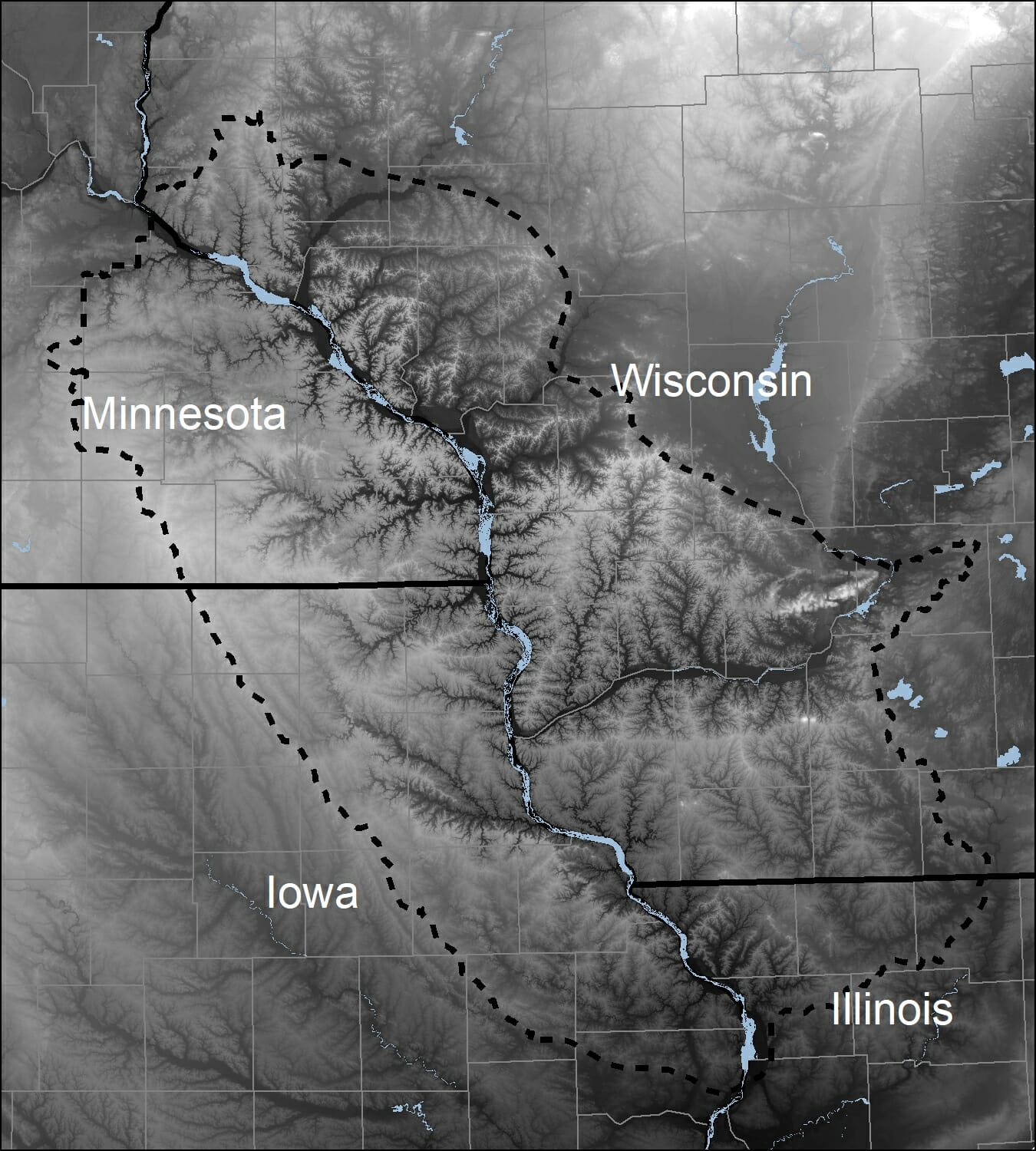
1. Settlement of the Driftless Area by Europeans between 1850 and 1935 altered the landscape through intensive agriculture and removal of forest cover, which resulted in significant sediment delivery to streams.
2. Replacement of forest and vegetative cover with row crops or continuously grazed pastures altered flow regimes in streams because of reduced ability of the catchment to absorb precipitation.
3. Beginning in 1935, after instituting the first watershed-scale soil and water conservation demonstration project in the United States in the Coon Creek watershed, cropping systems and land management changed in the Driftless Area, which led to reduced sediment losses from the landscape.
1. The abundant supply of cold water in Driftless Area streams is due to high rates of groundwater recharge.
2. Groundwater recharge rates are highest on the steep hillsides, which receive runoff from the hilltop areas in addition to direct precipitation.
3. Many headwater streams in the Driftless Area have unusually high baseflows as a result of the high recharge rates and the presence of horizontal bedrock layers that are relatively impermeable and divert groundwater to springs.
4. Poor agricultural practices in the first half of the twentieth century resulted in severe runoff and soil erosion, massive sediment deposition on the floodplains, and large increases in peak flows at the expense of baseflows.
5. The adoption of soil conservation practices in the later half of the twentieth century resulted in increased infiltration, a decrease in peak flows, and an increase in baseflows.
6. Future increases in air temperatures due to increases in atmospheric greenhouse gases will gradually increase stream water temperatures, although the impact will be somewhat buffered by the large amount of spring flow to the stream.
1. The geology of the Driftless Area directly influences fluvial geomorphic process, resulting in stream systems that are unique to the
region, but not uncommon worldwide.
2. Land management practices impact fluvial geomorphic process in Driftless Area streams.
3. The complexity of interaction between climate, landuse, soils, geology, ecology and geomorphic processes in Driftless Area require careful consideration, and generalities regarding cause and effect should be avoided when making management decisions related to landuse and ecology.
1. Several conceptual frameworks have been proposed to organize and describe fish habitat needs.
2. The five-component framework recognizes that stream trout populations are regulated by hydrology, water quality, physical habitat/geomorphology, connectivity, and biotic interactions and management of only one component will be ineffective if a different component limits the population.
3. The thermal niche of both Brook Trout and Brown Trout has been well described.
4. Selected physical habitat characteristics such as pool depths and adult cover, have a long history of being manipulated in the Driftless Area leading to increased abundance of adult trout.
5. Most blue-ribbon trout streams in the Driftless Area probably provide sufficient habitat for year-round needs (e.g., spawning, feeding, and disturbance refugia) for most Brook Trout and Brown Trout life stages.
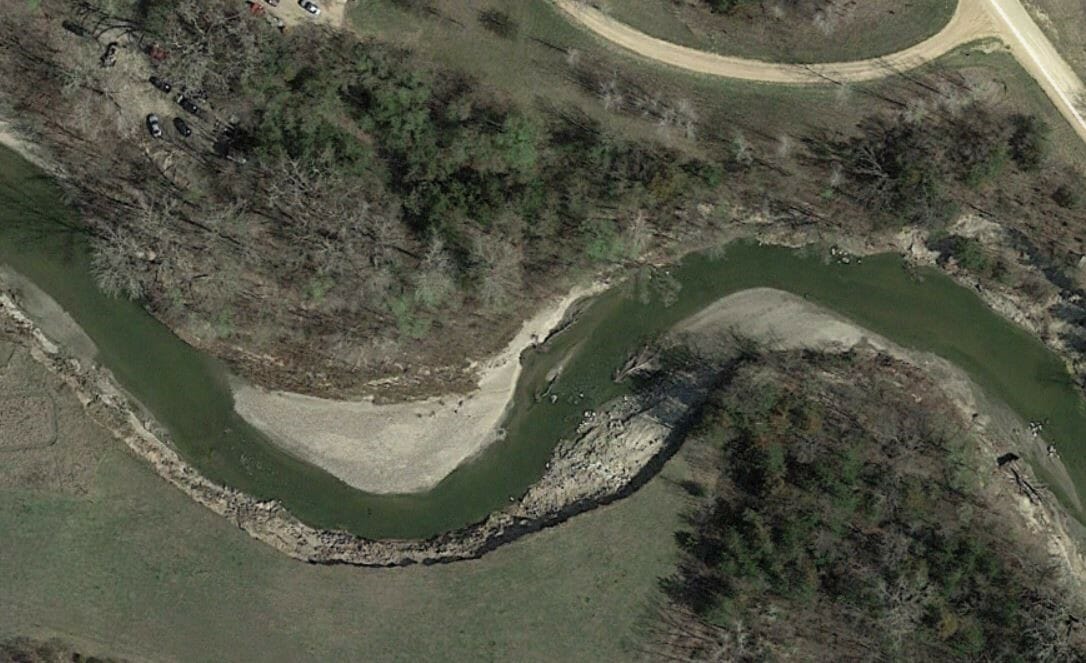
1. The Driftless Area has some of the richest species diversity of the Midwest…not combining habitat for other species utilizing the riparian corridor (than trout) is a missed opportunity.
2. Consider using the Nongame Wildlife Habitat Guide “Decision Matrix” to determine under what conditions the major non-game habitat features are most likely to provide benefits for various non-game species.
3. Incorporating non-game habitat at the same time that construction equipment is being used for trout/stream restoration projects is efficient and cost-effective.
4. The Nongame Wildlife Habitat Guide contains a detailed Monitoring Section. We strongly encourage you to monitor your projects to determine if adding these non-game habitat features is producing the desired results.
5. The Nongame Wildlife Habitat Guide contains more than 20 habitat features to consider for your project, and they are all ready to go in an NRCS practice design format.
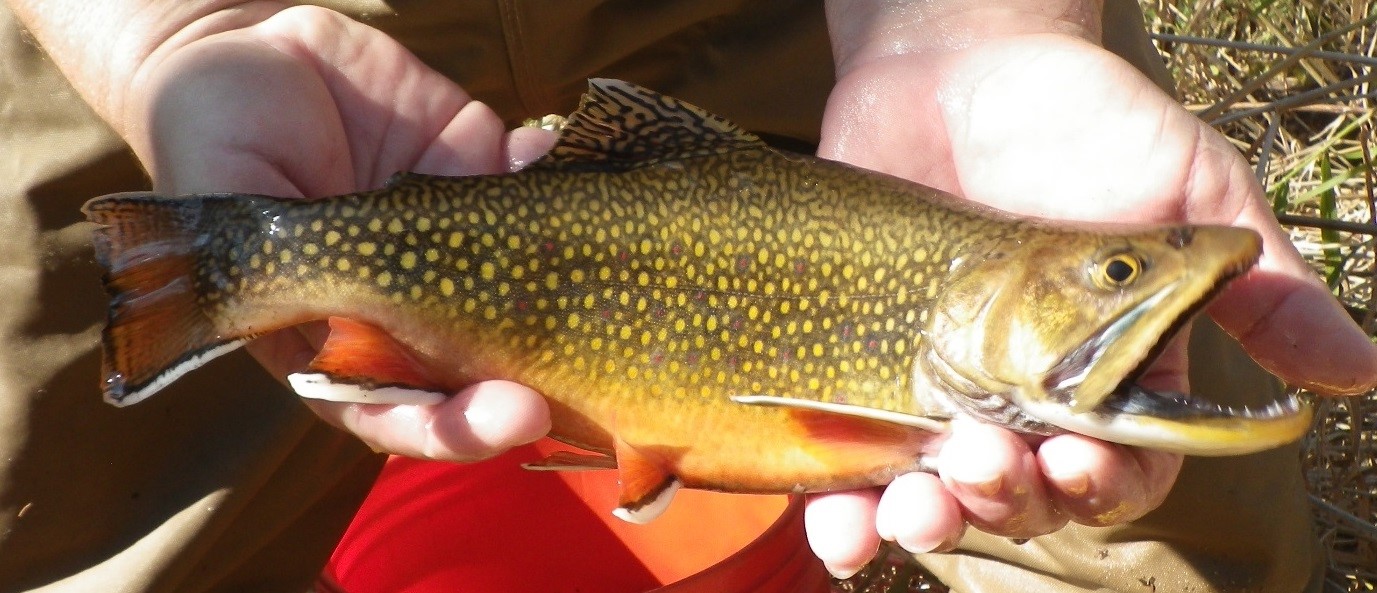
1. The Driftless Area is expected to experience higher temperatures and more intense and frequent rainfall events as climate changes (high certainty).
2. Soil moisture is expected to decline, especially when droughts occur, but effects may be offset by increases in precipitation.
3. Trout distributions are predicted to decline with warming stream temperatures, and the way species interact (e.g., Brook Trout and Brown Trout) will change in complex ways, such as being externally influenced by changing parasite-host relationships (e.g., gill lice).
4. Changes in precipitation frequency and intensity will change water: sediment balances in streams, altering stream stability and habitat for aquatic biota. These changes, such as flooding frequency, have been shown to influence trout population dynamics at a regional scale.
1. Stream restoration success depends not only on ecological outcomes, but also on manager learning and public support.
2. Restoration managers, practitioners, and researchers in the Driftless region have huge amounts of knowledge about the human dimensions of stream restoration.
3. Some attempts have been made to synthesize angler perspectives on restoration practices and the major economic impacts of restored trout streams.
4. There is a need for more peer reviewed research into the human dimensions of stream restoration in the region.
5. Collaboration across states, with tribal nations, and between disciplines will be central to learning more about how to engage public stakeholders to support stream restoration outcomes.
1. Stream restoration is an important element of trout stream management in the Driftless Area, generally involving the reestablishment of aquatic functions and related physical, chemical, and biological characteristics of streams that would have occurred prior to anthropogenic disturbance.
2. Each year, private entities, county, state, and federal governments, and non-governmental organizations like Trout Unlimited spend millions of dollars on stream restoration projects in the Driftless Area, for the primary purpose of improving coldwater streams for Brook Trout Salvelinus fontinalis, Brown Trout Salmo trutta, and Rainbow Trout Oncorhynchus mykiss.
3. Planning a monitoring program in conjunction with a restoration project facilitates the development of realistic, measurable project goals and objectives and the use of suitable protocols to assess project outcomes. In addition to documenting intended beneficial effects, consistent and systematic monitoring may also highlight inadvertent effects of restoration on target ecosystems.
4. The information obtained through monitoring provides critical feedback to project participants, grantors, and the public, and also helps restoration professionals decipher the reasons behind project successes and failures and apply those lessons to their practice.
5. When project outcomes and the resulting lessons are presented and shared, they help increase the overall knowledge of stream ecosystems and shape the growing science of stream and watershed restoration.
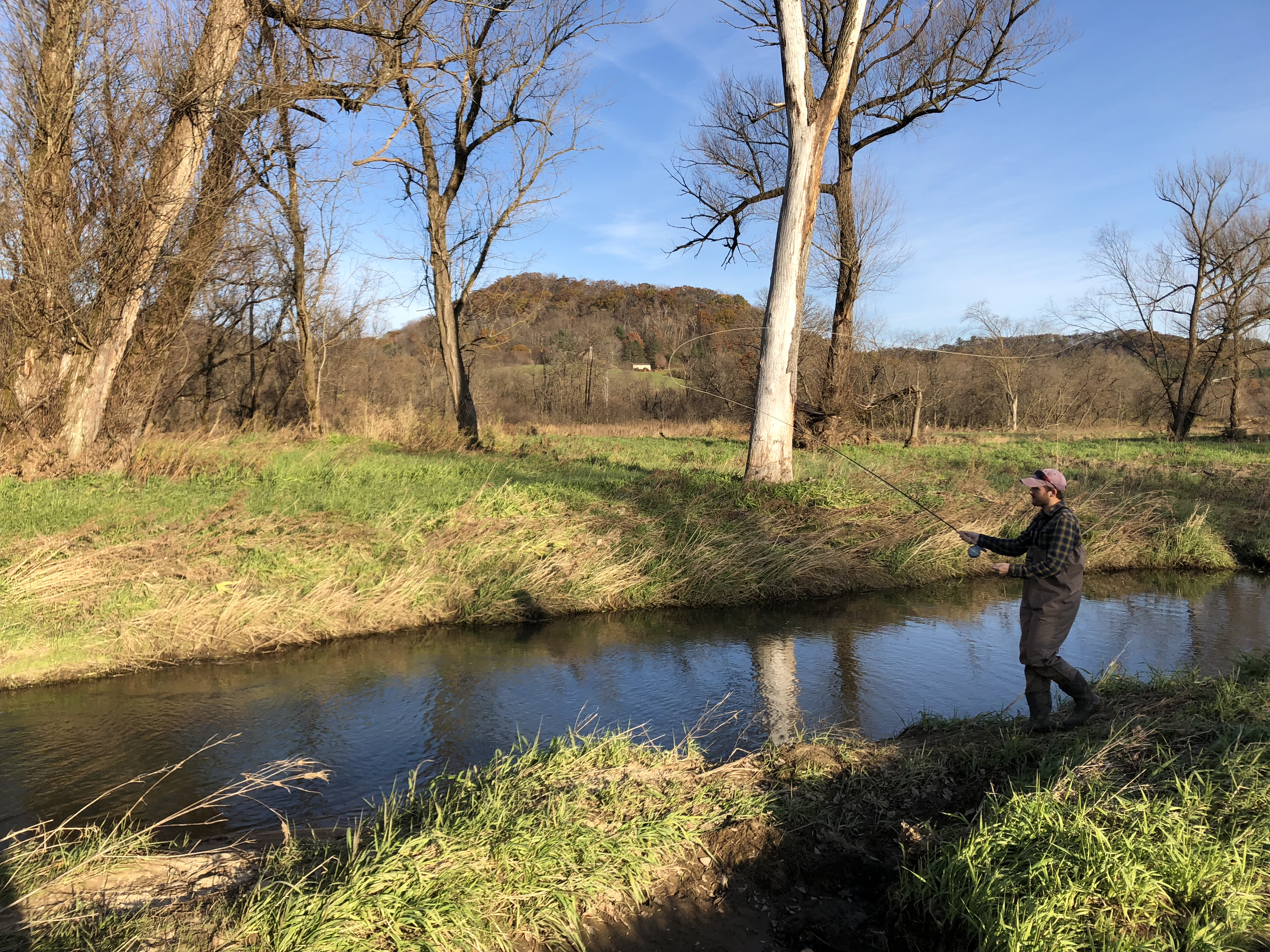
Coon Valley in the Driftless Area was the first large-scale demonstration project by the Soil Conservation Service (now known as the Natural Resource Conservation Service) in the 1930’s due to soil erosion from agricultural practices. Today, the Driftless Area contains a vibrant stream restoration community and destination trout fishery.
Historically, stream restoration projects in U.S. were designed and implemented by state or federal agencies, who completed assessment, design and construction internally. The vast majority of stream habitat improvement projects – historically and commonly referred to as ‘restoration’ – were small in size and were able to be done cheaply by government work crews. In the past 20 years, as funding has increased for stream restoration projects, average project size, complexity and cost have increased. Stream restoration is big business, with annual expenditures in the billions of dollars. Designing and implementing stream restoration projects, and channel reconstruction in particular, is a field of engineering and landscape architecture that has no generally agreed upon standards of practice. Many different approaches are used, some analytical and others experience based, which can lead to confusion and disagreement among professionals and complicates adequate review of proposed and completed projects. This section outlines the history of standards of practices in other fields, as well as the field of restoration, and recommends standards of practice for Driftless Area stream restoration.


